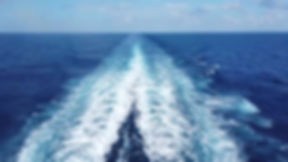
Presentation to families of the REMINER 2019 program de recherches de l'épave de la Minerve par l"Antéa" - July 3_cc781905-5cde-3194-bb35bcf5133
This meeting was filmed by the film services of the army. A link will soon provide access to this film. This account nevertheless includes aspects of the exchanges which were not filmed.
context
On Wednesday July 4, the families of the sailors of the Minerve were invited by the Maritime Prefect of the Mediterranean, the Admiral of Ché so that they could be presented with the search plan for the wreck of the Minerve which entered the active phase on the 5 July.
The families were represented by Christophe Agnus son Jean Agnus, Jacques Dannay, son of Michel Dannay, of Jean-Marc Doré, son of Bernard Doré, Caroline Cailliau-Bouchacourt and Jean-Michel Cailliau, daughter and brother of Patrice Cailliau, _cc781905-5cde -3194-bb3b-136bad5cf58d_Thérèse Scheirman-Descamps, wife of Jules Descamps, François Naas, brother of Daniel Naas, Anne-Frédérique Leblois daughter of Francis Leblois, André and Hervé Fauve, son of André Fauve.
Despite their desire to be present, geographical distance, professional constraints or health problems had prevented many families from being present.
Video of the presentation made to the families of the July 2019 research program at the Maritime Prefecture of Toulon @Marine Nationale
Campaign preparation
It appeared that since the last such meeting, in February 2019, considerable progress has been made in understanding the circumstances of the disappearance of Minerva. Commander Thomas Guerry immersed himself for months in the archives of the time relating to the search for the Minerva in 1968-1970.
This work revealed that there were inconsistencies between certain indices that had been exploited in 1968.
-
The position of the plane with which La Minerve had its last exchanges
-
The position of a slick of hydrocarbons which, according to sailors at the time, had the smell of fresh submarine diesel. The witnesses were convinced that he escaped from La Minerve.
-
The coordinates of the geographical location of the implosion noted by various seismographs
Reminders on indices
These clues pointed to different locations. The searches had therefore always concentrated on the positions indicated by the seismographs, which seemed to be more reliable.
-
Breguet Atlantic
However, it seemed certain that the Breguet Atlantic which was flying over La Minerve, unaware of the drama unfolding beneath it, could not be in the immediate vicinity of the places estimated by the seismographs. This is all the more true as he was able to return to his base without having to reposition himself. The pilots had been questioned immediately after the tragedy, their sincerity seemed certain.However, in 1968 it was considered that the pilots were mistaken about their position.
-
Oil spills
Hydrocarbon rises had been spotted on the first day of the search, January 28, 1968. The crews who had seen them were convinced that they were fresh diesel « de sous-marin_cc781905 -5cde-3194-bb3b-136bad5cf58d_” whose smell was characteristic.Even in February 2019, those responsible for resuming research said that these lifts could not have come from Minerva.
But all these places were far from each other. The Breguet Atlantic was located to the southeast, and the hydrocarbon stains to the northwest of the area of the implosion points.
-
Recording of seismographs
Seismographs had recorded an implosion on January 27, 1968. These implosions had been attributed to Minerva. A series of tests, using explosives, intended to measure the speed of propagation of the acoustic waves, had been carried out at the beginning of April 1968 to better determine the initial point of these implosions.Then, all the research was concentrated on these points alone.
Work hypothesis
The Commander worked with the conviction thatall these clues had to be taken into account.
His analytical work enabled him to reconcile them taking into account their respective approximation margins and deep underwater currents, unknown in this area until a short time ago. .
The points of the implosion determined larger areas than previously estimated.
A new search area has thus been defined.It is located about 10 km further south than where the main previous research campaigns took place.
The new search area
L'Antea of IFREMERwill carry out this research campaign.
This zone, with a surface area of approximately 300 km2, at a depth of 2300 m, is flat, with no known wreckage,has never been investigatedand there is little risk that deposits would have covered the wreckage if it is there.